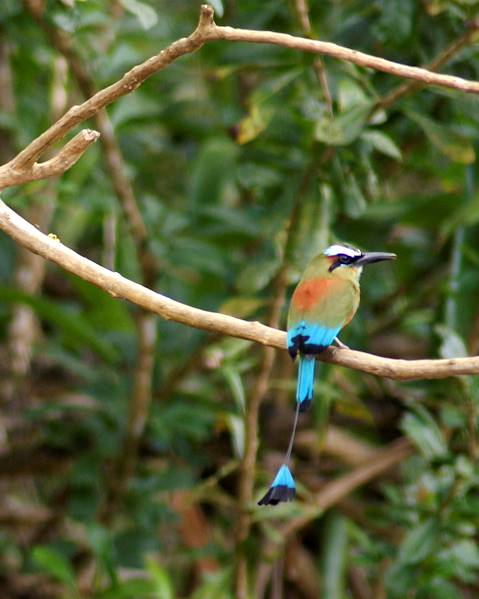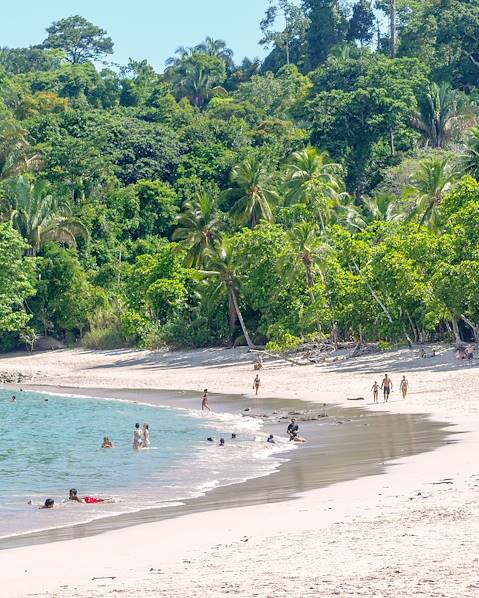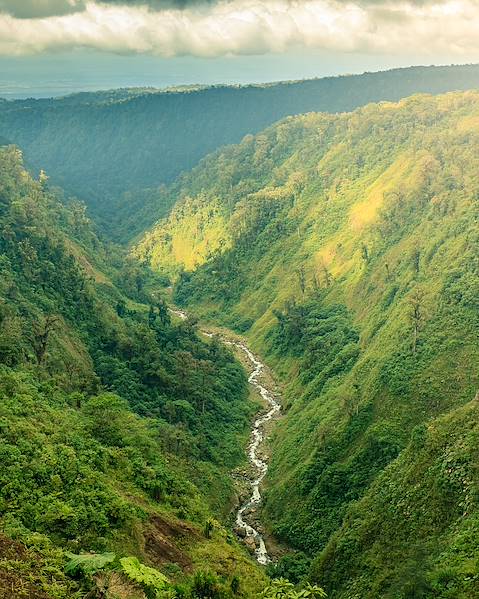Costa Rica will blow your mind. A Central American country with unbreakable national pride and progressive environmental and sustainability policies, it’s an adventure seeker’s dream: misty volcanoes, pounding surf and tangles of rainforest. Life here revolves around its easy come, easy go mantra - Pura Vida: a phrase literally translating as ‘pure life’; don’t dwell on the bad stuff, no worries, no stress, no fuss. The country is now firmly on the tourist trail, and eco-minded Costa Rica is at the vanguard of environmental policies and sustainable action. Yet arrive in the capital, San José, and the picture looks very different: the large city is squished into a narrow valley, with roads traversed by beeping cars and whizzing motorbikes. Be warned: journeys can take far longer than expected, so patience may be needed! Beyond San Jose, there’s an abundance of nature to be discovered across the country. To help you plan your visit, here are some things to know before travelling to Costa Rica…
Climate & Weather
Costa Rica enjoys a tropical climate, with distinct dry and wet seasons. The dry season takes place between December and March, while the wet season runs from April to November. Temperatures frequently reach up to 35°C during the dry season, with average minimum temperatures sitting around the low 20s. Costa Rica’s rainy season is more intense and longer towards the south of the country. There are some exceptions to these seasonal rules and in the eastern part of the country, September and October are often drier than anywhere else. Despite falling during the rainy season, July and August also usually see less rainfall and are referred to as ‘little summer’. Figuring out the best time to visit Costa Rica can depend on where you’re planning to stay and your preferred pursuits, while packing for the weather is also key.
Health & Safety in Costa Rica
Costa Rica is generally a safe country to travel around, although petty crime does occur in busy tourist areas. As in any foreign country, remain attentive to your belongings, don’t flaunt any expensive possessions or jewellery, have travel insurance and avoid using your mobile phone in the street. Always keep your passport, travel documents and other valuable items in a safe place and be vigilant when withdrawing money from ATMs. Thefts are more common on buses and beaches, so make sure to keep an eye on your belongings at all times. Avoid leaving drinks unattended at bars as there have been reports of tourists’ drinks being spiked, and don’t wander the streets after dark or head to unknown neighbourhoods without researching their safety first. Make sure to only use official taxis – they can be distinguished by their red or orange colouring, triangular sticker and plastic box on the roof with the name and number of the taxi company.
Costa Rica is a country for adventure lovers, however it’s important to ensure that all activities are carried out safely. Only use reputable tour companies, make sure all equipment is in good condition and have comprehensive travel insurance. Visit jungle areas with an experienced guide and pay close attention to volcano entry restrictions; national parks will be closed if there is any risk of eruption. These safety precautions should also be noted when swimming and snorkelling; rip currents are common off Costa Rica’s beaches and there are often no lifeguards – so make sure to follow local advice and warnings.
Accommodation
It’s worth noting that in hotels, the beds are usually the size of a small double, and you’ll often find two beds in a double room. But the thing about Costa Rica is that it knows exactly how to welcome visitors, and scores of hotels are dotted across the country: be it slick city centre pads with distant views of volcanoes, boho-style beach huts perched directly on the sand, all-inclusive resorts that cater to every whim, or plush jungle boltholes with all the frills. Essentially, there is every type of accommodation to suit every budget.
Great Outdoors
This is a country that sees a lot of rain, but it’s thanks to this rain that you’ll find verdant rainforests with giant leaves and technicolour flowers dotting the greenery. It can rain for weeks in Arenal or Tortuguero. But over on the west coast, pounded by the Pacific, the climate is far drier. Keep all of this in mind when researching what time to fly out to Costa Rica - you don’t want to book a beach holiday when it’ll be hammering down for 20 hours a day (probably one of the most important things to know before travelling to Costa Rica!).
Costa Rica’s national parks are home to countless animals and birds. And while sightings of ocelot, jaguars or pumas are very rare – though not impossible – you’re more likely to come across critters and insects scurrying across your hotel rooms or darting down the plughole; try and remember to shake your shoes before slipping them on in case a spider has holed up inside. Waking up to the call of howler monkeys or macaw is commonplace when you head into the hinterland.
The wildly popular Tortuguero National Park – sitting on a rainforest-covered sandbar on the Caribbean coast – draws nature lovers to its beaches, wetlands, canals and thick forests. Explore winding waterways and kayak along canals, watching birds flitting between the trees and monkeys swinging from the branches; visit during turtle nesting season and catch hatchlings scurrying over the sands towards the waves; and hike through jungle to stare at wildlife and hulking leaves.
One of Costa Rica’s most popular destinations – and for good reason – is the active Arenal Volcano. Up until recently, there were around 41 eruptions a day, and although it’s currently in a resting phase, hiking up the volcano is not permitted. There are, however, plenty of outdoorsy escapades in its eponymous national park: wallow in thermal pools, zipline through the forest canopy, hike to La Fortuna waterfall, kayak in Lake Arenal, and book a subterranean tour of the Venado Caves.
Renting Cars
Costa Rica isn’t dangerous, but theft from cars is an issue so if you have hired a car, refrain from leaving anything in it and try to use private car parks when they are available. Another thing to be wary of are officials telling you that car parks are full and directing you to others, which are more expensive. Road conditions are generally good on main routes, although there can be potholes due to heavy rainfall and in rural areas, expect rugged and unlit roads. There are a number of other modes of transport in Costa Rica, linking all corners of the country.
Respecting Costa Rica
One of the key things to know before travelling to Costa Rica is to respect the locals and the landscapes. With so much stunning geography dotted throughout the country, the nation is taking considerable steps to protect its natural assets. Read up on the country’s sustainability policies and help out by reducing waste, not littering, shopping local and showing consideration for local customs. As a travel company, we’ll do the rest and your local guides will be fountains of knowledge, creating unforgettable journeys through this enigmatic Central American country.
















